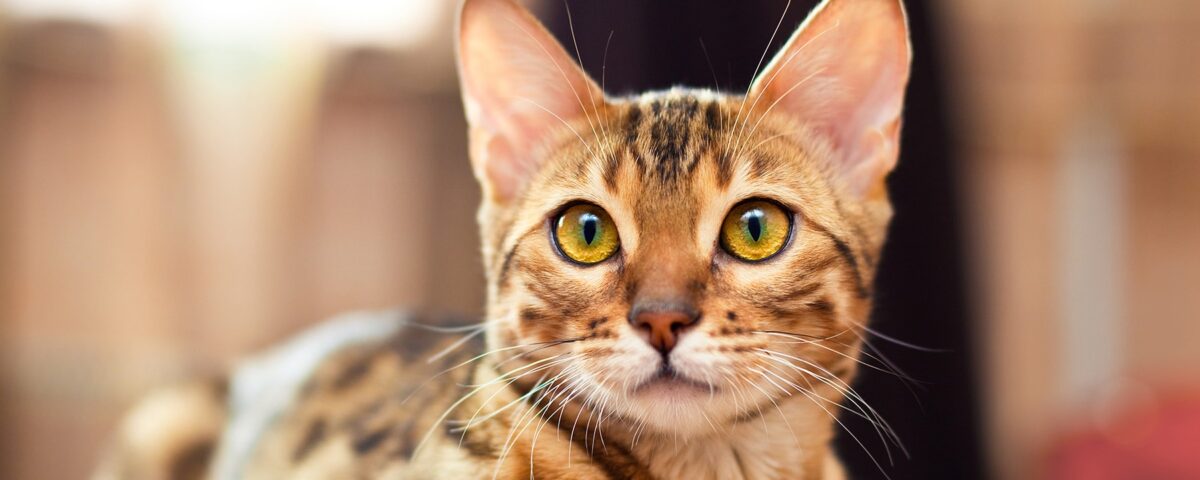
Fleas and Your Cat
Posted: 06/23/2022 | Categories: Parasites with your cat
Fleas are surely the best known of pet-dwelling parasites, known for making your furry friend itchy and uncomfortable.
If you own a cat, chances are your pet has picked up the critters at some point in its life. But how much do you really know about fleas and how best to prevent them? Let’s take a closer look at these microscopic menaces.
How does my cat get fleas?
Fleas are small brown or black jumping insects. They are parasitic, meaning that they feed on the nutrients ‒ namely, blood ‒ of other creatures. Different fleas have adapted to favour different animals for their meals. Not surprisingly, the most common type of flea found on cats is the cat flea, or Ctenocephalides felis, but rabbit, rat and even human fleas will settle for a cat if they can’t find their preferred mammal to munch on.
The most common routes by which fleas could find their way onto your cat are:
- Other animals: While the social nature of dogs means that they often pick up fleas from their own species, cats are more at risk from their predatory instincts. Wildlife such as hedgehogs and mice are irresistible playthings to our cats, and they can carry fleas that transfer on contact.
- People: You, your friends and your family may unwittingly carry fleas into the home, which then settle and await to make contact with your pet. For example, fleas from another cat might be carried on the pet parent’s clothes when they come to visit.
- Adventure: Cats love to explore, often disappearing from the home for hours at a time and covering great distances. This drive to explore is the surest way for your cat to pick up fleas, as she brushes through long grass, bushes and hedgerows.
What are the symptoms of fleas?
Keep an eye on your cat’s behaviour. Fleas bites can vary from mildly irritating to very painful, so if your cat is frequently scratching, shaking their head or grooming their coat excessively, then they may have picked up fleas. If you inspect your cat’s fur close to the skin (a flea comb can help) you may be able to see them. They tend to congregate around the armpits and groin, base of the tail and around the ears – areas where it is most difficult for the cat to dislodge them and it is warm and moist.
How to treat cat fleas
As fleas reproduce quickly, it may not be long before your cat is covered in the critters, so it’s important to treat the infestation as quickly as possible.
Cat fleas can normally be quickly and efficiently removed using a fine-toothed flea comb. When combing, always comb from close to the skin, at the base of the fur and prepare a bowl of hot water and dish soap. Dunk the used comb and clean out any fleas you’ve removed into the mixture to kill them.. This prevents the fleas escaping and spreading once again.
There is also a wide range of specially-designed treatments on the market which can be highly effective in eliminating fleas on cats. These range from exterminating spot-on treatments and flea sprays, to more preventative options such as flea collars that contain repellent scents. But always check with your veterinarian to find out what’s best for your cat.
How to prevent cat fleas
The golden rule of flea prevention is to protect your pet’s environment as well as your pet. There is little point clearing your cat of fleas if the house or garden are still infested. The good news is there are several easy steps you can take to help minimize the chances of your cat picking up fleas:
- Spray your home and yard: As well as spot-on treatments and flea collars for your pet, there are also carpet and upholstery sprays you can use to kill the eggs and larvae that will be in your home. Remember to spray all your carpets and rugs, behind the cushions, down the back of the couch and along the edges of your fitted carpets as fleas will hide in dark spaces. To be completely effective you need to repeat the treatment 3 or 4 weeks after the first treatment.
- Clean your home regularly: If you have found fleas in the home, thoroughly vacuum-clean all carpets, rugs and soft furnishings and throw away the dust bag once you finish to make sure every trace is gone. Sweep or vacuum and mop hard floors, and remember to clean under furniture too. Remember, fleas breed quickly, so even a small infestation left untreated could undo all your hard work.
- Wash your cat’s bedding: Fleas love to be where your cat is, so wash all your cat’s bedding and their toys in hot water to kill any eggs, larvae and adult fleas that might be lurking there.
- Invest in some flea traps: If fleas occur frequently, consider leaving some flea traps around the home. You can purchase little sticky pads which attract the bugs so they become stuck and eventually die, or a bowl of hot soapy water placed under a bright light overnight can also act as an effective flea trap. But remember, traps can help to eliminate the adult population, but won’t tackle the larvae and eggs in your home, so it’s still important to clean.
- Keep the yard tidy: Most of us don’t associate gardening with pest control, but the backyard of your home is an ideal breeding ground for fleas. Use a yard spray to clear your outside space of fleas so you don’t carry them back into the house on your shoes and your cat doesn’t get re-infested.